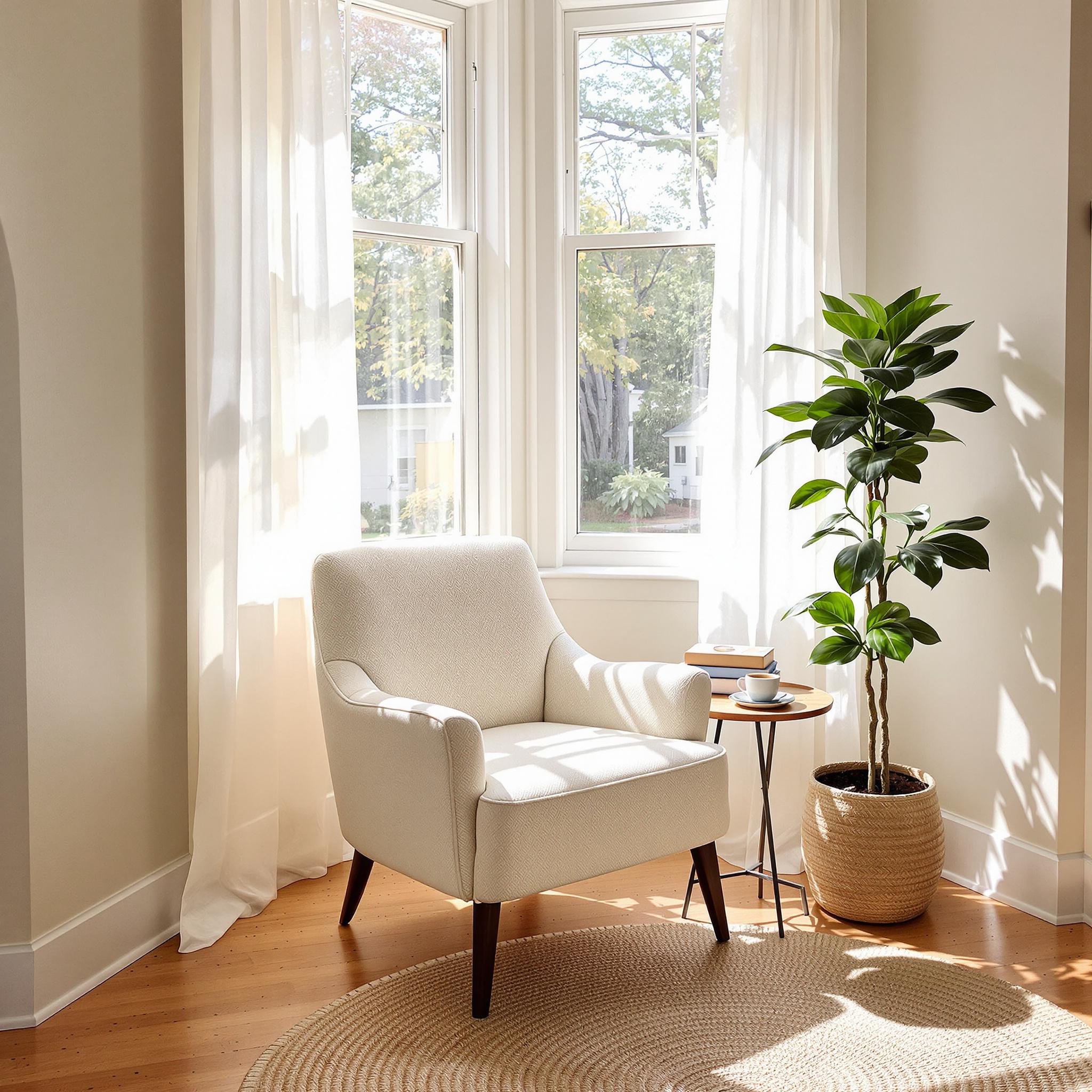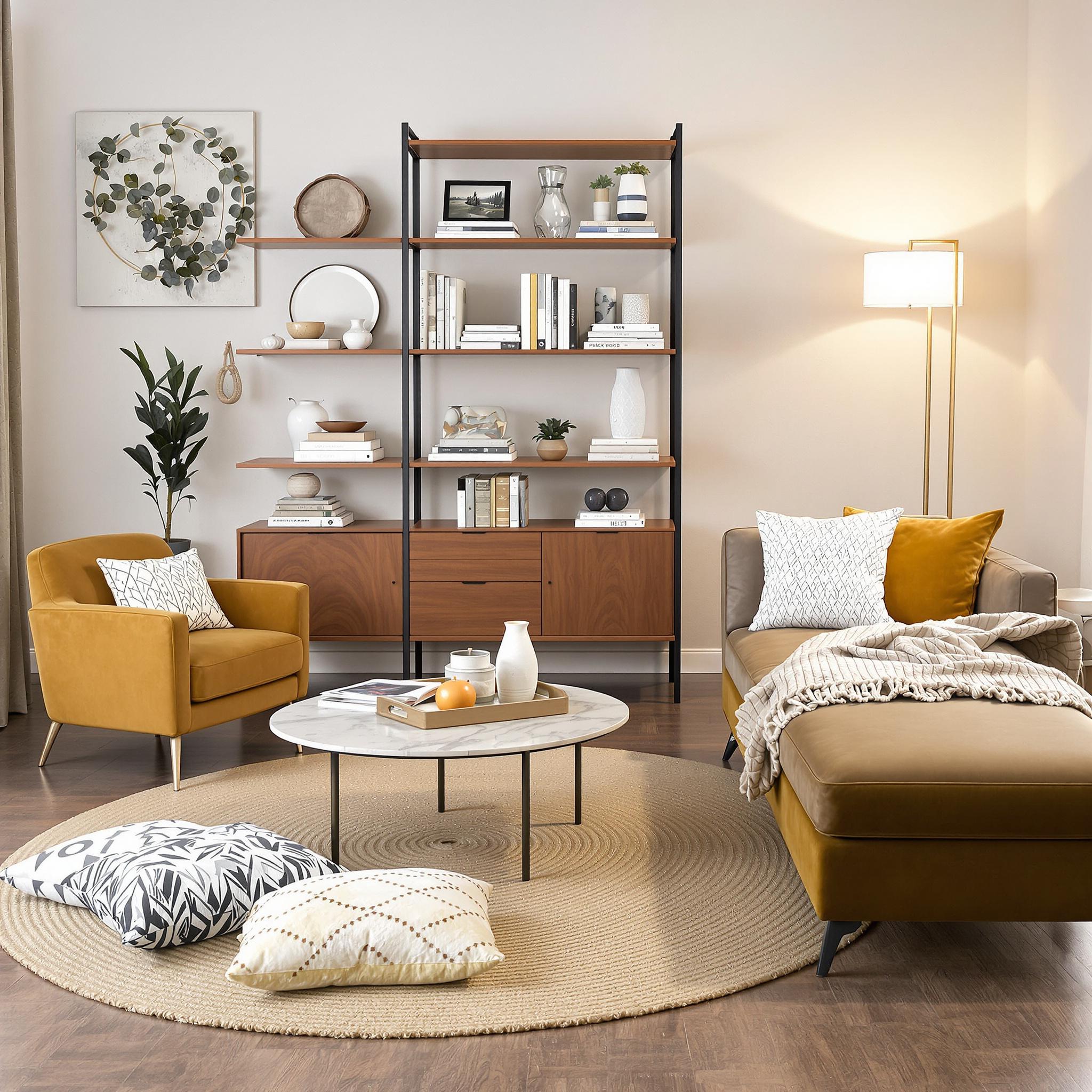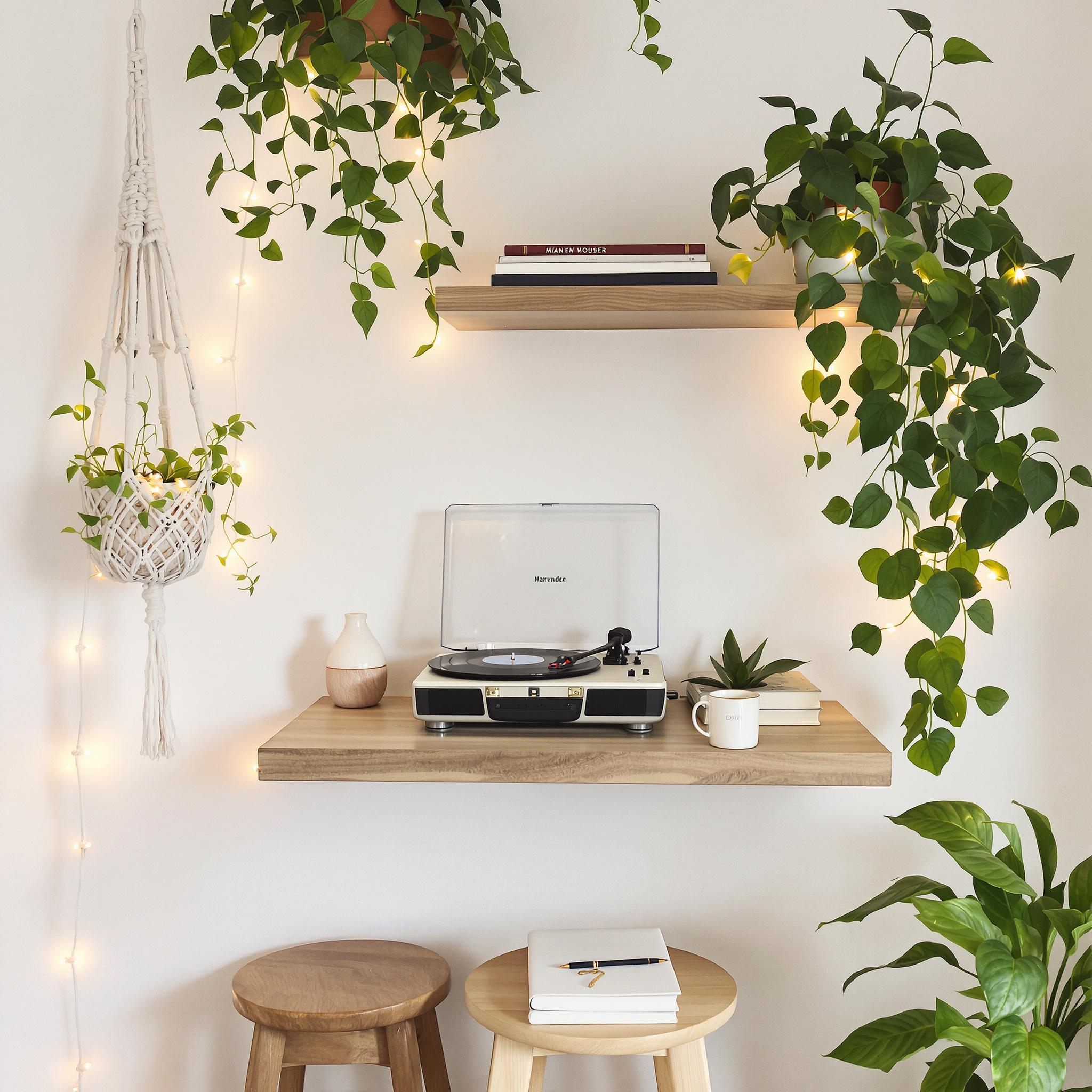Choosing the Perfect Spot for Your Reading Corner
Finding the right location is key to creating a cozy reading nook. Start by looking for a quiet area in your home. Noise can distract you from enjoying a good book. A spare corner, under a stairway, or even a sunny spot by a window works well.
Natural light makes any space feel inviting. If possible, pick a spot near a window. Sunlight reduces eye strain and creates a warm atmosphere. Avoid areas with harsh shadows or direct glare on your book pages. You can always add curtains or blinds to control brightness.
Consider how much space you have. A small corner needs smart planning. Measure the area before buying furniture. Leave enough room to move around comfortably. Don’t overcrowd the space with unnecessary items. Keep it simple and functional.
Optimizing Layout for Comfort and Accessibility
Once you’ve picked a spot, think about the layout. Arrange furniture to make the space easy to use. Place your chair or sofa so you face away from distractions. This helps you focus on your book.
A side table is a must-have. It holds your coffee, tea, or snacks while you read. Make sure it’s within arm’s reach. Add a small bookshelf nearby if you have space. This keeps your favorite books handy.
Think about traffic flow. Ensure the area is easy to access without bumping into things. Avoid placing your reading corner in a high-traffic zone. You don’t want people walking through while you’re lost in a story.
If you share your home with kids or pets, create boundaries. Use a rug or screen to mark the area as special. This signals others to respect your quiet time.
Tips for Decluttering and Defining the Space
A clutter-free area feels calm and relaxing. Start by removing items you don’t need. Donate old books or store them elsewhere. Only keep essentials in your reading corner.
Use storage solutions to stay organized. Baskets or bins work well for magazines and blankets. Hide wires and cords to keep the space tidy. A clean area helps you focus better.
Define the space to make it feel intentional. Add a soft rug to anchor the area. Choose colors and textures that match your style. Plants bring life to the corner and improve air quality.
Lighting matters too. Use a floor lamp or table lamp for evening reads. Warm lighting creates a soothing vibe. Skip bright overhead lights that can feel harsh.
Personal Touches to Enhance the Atmosphere
Adding personal touches makes the space yours. Hang artwork or photos that inspire you. Choose pieces that make you smile or feel relaxed.
I once added a small water fountain to my reading corner. The gentle sound of flowing water helped me unwind. Experiment with scents like lavender or vanilla candles. These small details make a big difference.
Comfort is non-negotiable. Invest in a good chair or cushion. Test seating options before buying. Your back will thank you during long reading sessions. Add a soft throw blanket for chilly days.
Final Thoughts on Creating a Functional Reading Nook
A great reading corner combines practicality with personality. Focus on natural light, quiet, and comfort. Arrange furniture thoughtfully. Declutter and define the space to make it yours.
Remember, this is your retreat. Design it to suit your needs. Whether you prefer modern or cozy vibes, let your style shine. With careful planning, your reading corner will become your favorite spot at home.
- Pick a quiet, well-lit spot.
- Arrange furniture for comfort and ease.
- Declutter and organize the area.
- Add personal touches to make it unique.
Choosing the Perfect Seating Options for Every Room
Let’s talk seating. It’s one of those things we don’t think about until our backs start hurting—or someone visits and has nowhere to sit. I once threw a dinner party and forgot extra chairs. My cousin ended up perched on a wobbly ottoman, trying not to spill his wine. Awkward. Lesson learned: seating matters.
Cozy armchairs are like a warm hug for your living room. They’re great for reading or binge-watching shows. Funny thing—people often skip testing them before buying. Sure, they look good in pictures, but if you sink too far or feel unsupported, what’s the point? Look for comfy cushions and good back support. Leather chairs add class, while velvet ones bring color and texture.
Now, let’s chat about floor cushions. These are super popular right now, especially with younger folks. They’re affordable, versatile, and have that boho vibe. Who doesn’t love sitting cross-legged during movie night? Just make sure they’re firm enough to actually hold you up. Pair them with a low table or pouf, and you’ve got a chill seating area ready to go.
And then there’s the chaise lounge—a piece so stylish it could star in its own Instagram feed. Whether in a bedroom corner or a reading nook, these loungers scream relaxation. But don’t ignore comfort here. Find one that supports your body without twisting you into weird positions. Adjustable features? Even better. Trust me, your future self will thank you.
Adding Complementary Decor Elements That Wow
Alright, you’ve got the seating sorted. Now it’s time to accessorize. Think of furniture as the main dish—side tables, rugs, lighting, and shelves are the sides that complete the meal. Without them, it feels unfinished. Like pizza without garlic knots. (Why would anyone skip those?)
Side tables might seem small, but they’re lifesavers. Need a spot for your coffee mug or books? Done. Go for designs that suit your style and needs. A wooden side table works well in minimalist spaces, while metallic ones add glam. Short on space? Try nesting tables—they slide under each other. Brilliant.
Bookshelves are another decor powerhouse. They hold books, obviously, but also display plants, photos, and fun knick-knacks. Mix vertical and horizontal stacks for visual interest. Leave some empty space—overcrowding looks messy. I once crammed my bookshelf full, only to realize it looked like a chaotic garage sale.
Rugs tie a room together like nothing else. Ever walked into a space without one? Feels… off, right? Size matters here. Too small, and it looks like an afterthought. Too big, and it swallows the room. Aim for something that fits snugly under your furniture. Wool rugs are cozy and durable, while jute ones give off beachy vibes. Layering rugs adds depth—try a patterned one over a neutral base.
Lighting sets the mood. Pendant lights above a dining table create drama. Floor lamps next to a chair offer comfort. Don’t forget task lighting, like desk lamps or under-cabinet LEDs. My favorite? String lights. They’re simple but instantly warm up a space. Plus, they remind me of summer nights outdoors.
Incorporating Personal Style Through Color, Texture, and Accents
This is where the fun starts: making the space yours. Decorating isn’t just about trends—it’s about creating a home that feels like *you*. So mix colors, play with textures, and add accents that make you happy.
Start with color schemes. Love bold shades? Paint an accent wall in emerald green or navy blue. Prefer neutrals? Stick with whites, grays, and beiges, then add pops of color through pillows or art. I’m loving terracotta tones lately. They feel earthy and calm. But maybe pastels or jewel tones are more your thing. Go for it.
Textures engage the senses and keep a room from feeling flat. Walk barefoot on a shaggy rug or touch a nubby throw blanket. Combine smooth surfaces like glass with rough ones like wood. Add woven baskets or macramé hangings for extra charm. Balance is key.
Decorative accents are the finishing touches. This could be framed prints, quirky sculptures, or travel souvenirs. Choose pieces that tell a story. Maybe it’s a handmade gift from a friend or something you picked up on vacation. Those details make a house feel like home. Just don’t clutter every surface—sometimes less is more.
Oh, and don’t shy away from DIY projects. Upcycling old furniture or making custom decor gives you bragging rights. I once turned a thrift-store dresser into a statement piece with chalk paint. Friends still ask how I did it. Honestly, imperfections make it unique.
Wrapping It All Together Practically
At the end of the day, comfort and style work together. Your home should reflect who you are while staying functional. Start with seating that supports both your body and your aesthetic. Add decor elements that enhance usability and beauty. Finally, sprinkle in personal touches that make you smile.
Take it step by step. Rome wasn’t built in a day, and neither is your dream space. Focus on one area at a time, and don’t stress about perfection. Homes evolve, just like we do.
Creating a Calming Ambiance with Sensory Elements
Ever notice how walking into a spa makes you feel instantly relaxed? That’s sensory elements at work. You can turn your reading spot into a peaceful retreat by engaging your senses. It’s easier than you think. Start with soothing scents. Lavender, sandalwood, or eucalyptus are great choices. I bought a tiny essential oil diffuser on a whim once, and it became my go-to for relaxation. A few drops of oil, and suddenly my reading nook felt like a mountain spa.
Music helps too. Soft tunes in the background, like lo-fi beats or instrumental jazz, add life without distraction. I love playlists that mimic rain—it’s oddly calming, especially with a good book. If music isn’t your thing, try nature sounds. Apps like Calm or Spotify have ocean waves, birds, and fireplaces. It’s like bringing the outdoors in, bug-free.
Decor matters too. Adding plants, wood textures, or a small fountain brings life to your space. I once brought home a pothos plant for my reading corner. It completely changed the vibe. The greenery made everything feel fresher. Bonus: plants clean the air, so it’s a win-win.
Organizing Books and Accessories for a Tidy Space
Let’s face it—clutter kills the mood. A clean, organized space feels lighter and more inviting. My trick? Group similar items together. Keep books on one shelf and accessories like candles or journals on another. This creates order without looking stiff.
Here’s a tip: use baskets or bins for small stuff like bookmarks or cables. They hide clutter and add a cozy touch. Don’t forget vertical space! Wall shelves or floating ledges free up floor space and let you display knick-knacks. Funny story—I hung a shelf above my chair thinking it’d be decorative. Now it’s where I stash snacks. Priorities, right?
If you like switching things up, try a rotating book display. Instead of cramming every book onto one shelf, pick a few based on your mood or season. Maybe you’re into mysteries or autumn novels. Curating your collection keeps things fresh.
Maintaining Your Reading Corner’s Peaceful Vibe Over Time
Creating a serene reading corner is one thing. Keeping it that way takes effort. Life gets busy, and before you know it, your cozy nook might look like a mess. But don’t stress—it’s manageable with a few habits.
First, schedule regular cleaning. Even 10 minutes a week makes a big difference. Dust shelves, fluff pillows, and wipe surfaces. Dust bunnies sneak up fast. Declutter as you go. When you finish a book, decide right away if you’ll shelve it, donate it, or pass it along. Letting go feels freeing.
Updates help too. Every few months, switch out decor or rearrange furniture. Swap heavy winter blankets for lighter throws in spring. Trade dark cushions for brighter ones in summer. These tweaks keep your space from feeling stale.
Mindset matters too. Sometimes upkeep is less about cleaning and more about intention. Make a rule to unplug while in your reading corner. Light a candle, grab a tea, and just relax. This ritual reinforces that your space is sacred—a little haven just for you.
Final Thoughts
Your reading corner should reflect what makes you happy and calm. Whether it’s the smell of vanilla, fairy lights, or neatly stacked books, the details matter. They create a space to escape, recharge, or just sit quietly. Take time to care for your nook, and it’ll reward you with peace.
Frequently Asked Questions (FAQ)
- How do I choose the right scent for my reading corner?
Go with what relaxes you. Lavender calms, citrus energizes, and vanilla feels cozy. Experiment until you find your favorite. - What kind of music works best for a reading space?
Stick to instrumental music or ambient sounds. Lo-fi hip-hop, classical piano, or nature sounds are great picks. - Can I use artificial plants instead of real ones?
Sure! Fake plants need no care and still add greenery. Just make sure they look realistic enough to blend in. - How often should I clean my reading corner?
Do a quick tidy-up weekly and a deeper clean monthly. Regular dusting and organizing prevent clutter buildup. - Where should I store extra blankets or pillows?
Use woven baskets or ottomans with hidden compartments. They keep things handy and stylish. - What if I don’t have enough space for a full reading corner?
No worries! A comfy chair, side table, and a small stack of books can work wonders. Focus on quality over quantity. - Should I rotate my decor seasonally?
Not necessary, but it keeps things fresh. Swap heavier fabrics for lighter ones in summer or update colors for the seasons. - How can I make my reading corner kid-friendly?
Use durable, washable fabrics and include a low shelf with kids’ books. Add soft rugs and padded corners for safety. - Is it okay to mix genres when displaying books?
Absolutely! Mixing genres adds personality. Arrange them by color, size, or theme if you want a cohesive look. - What’s the easiest way to refresh my reading corner?
Start small. Swap a pillow, add a plant, or change the lighting. Small tweaks can make a big impact.



